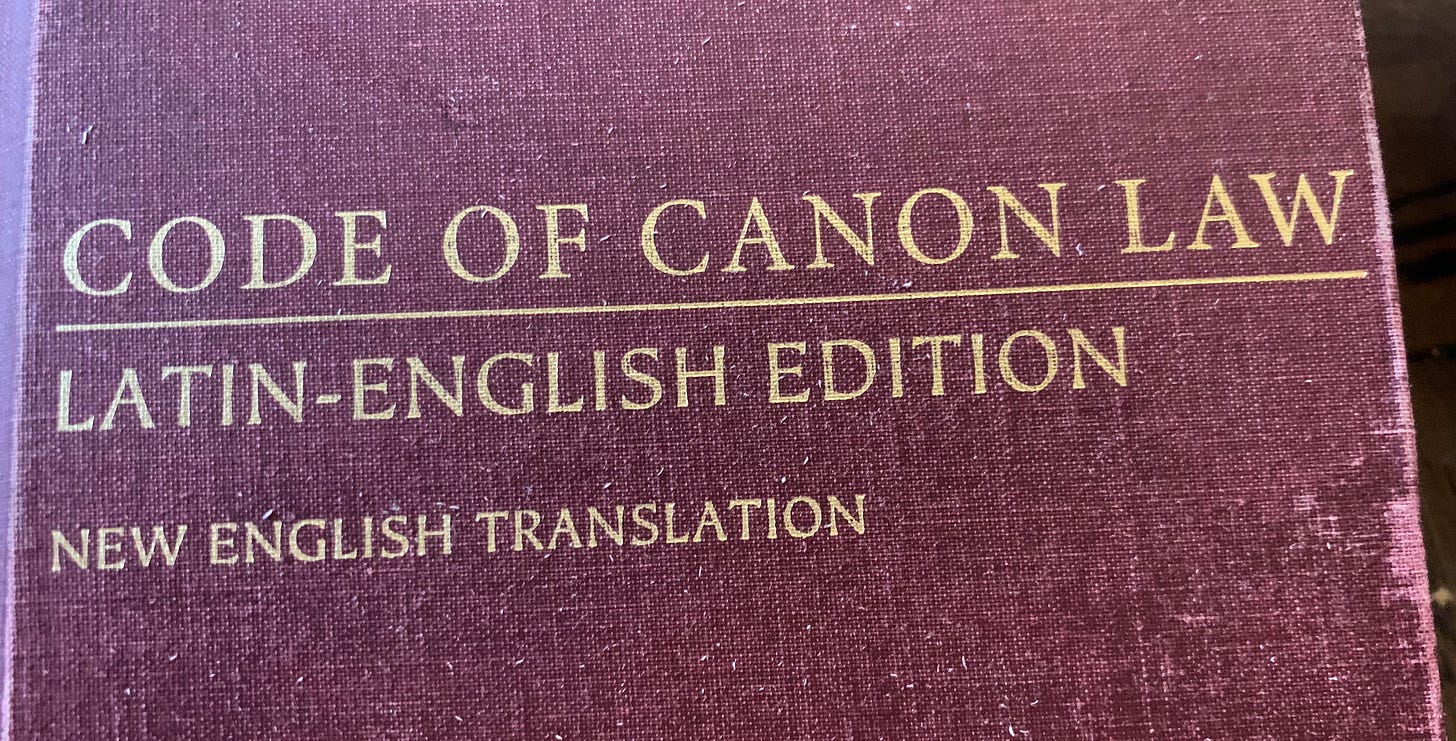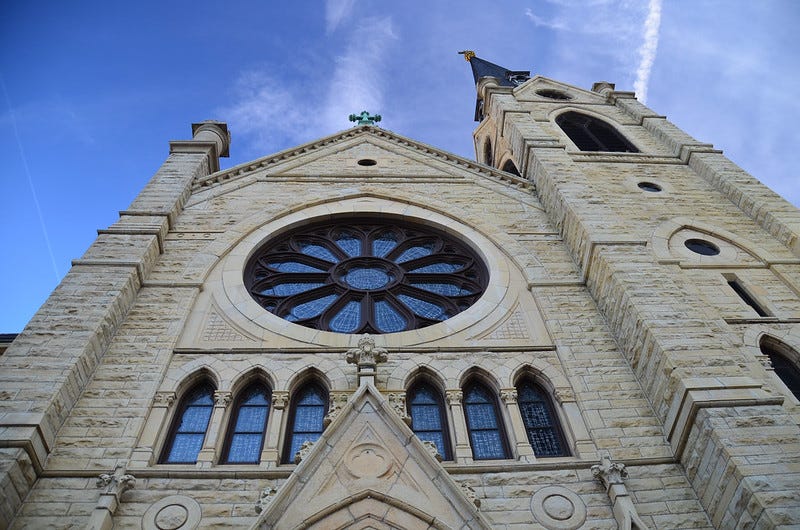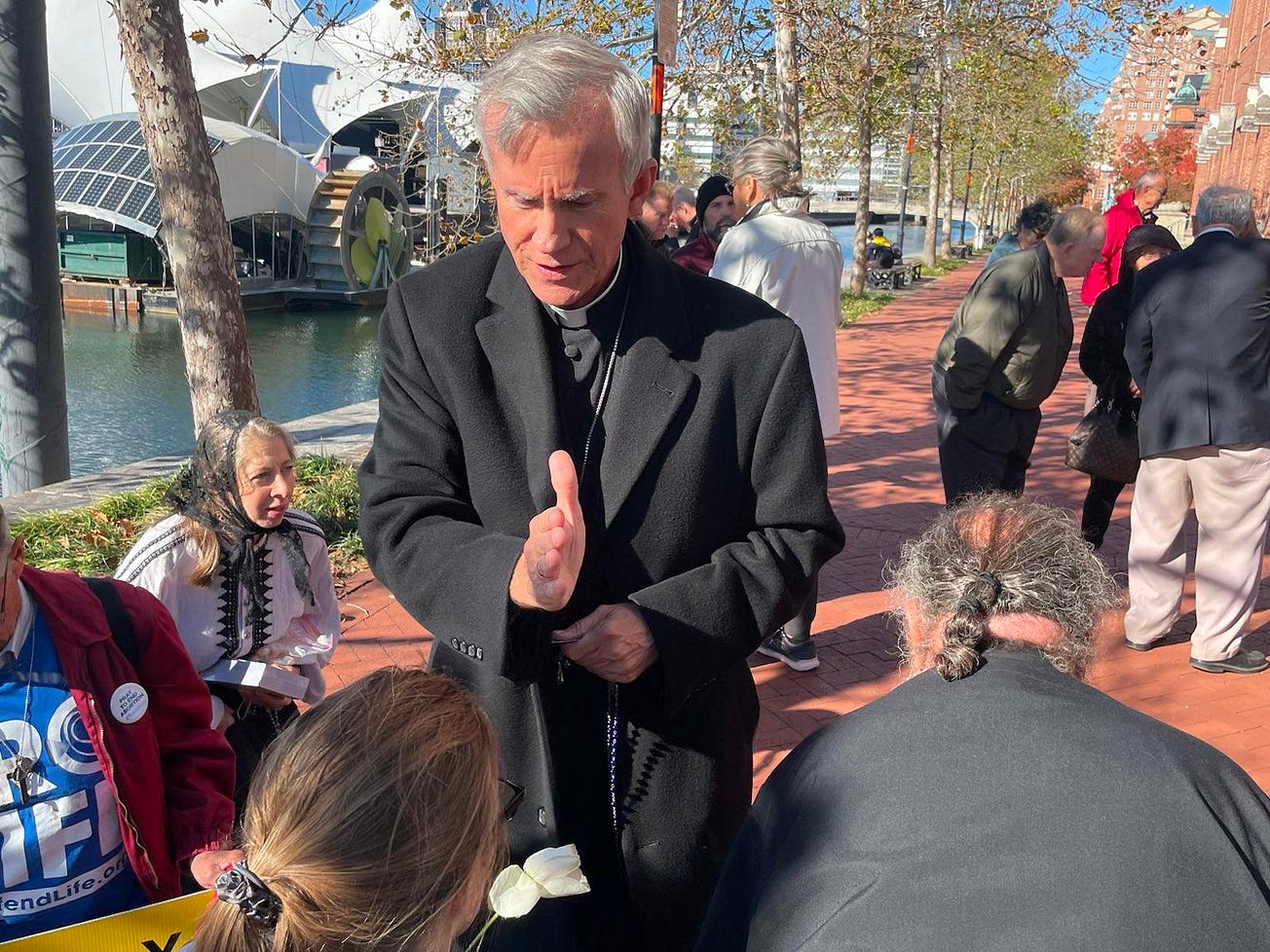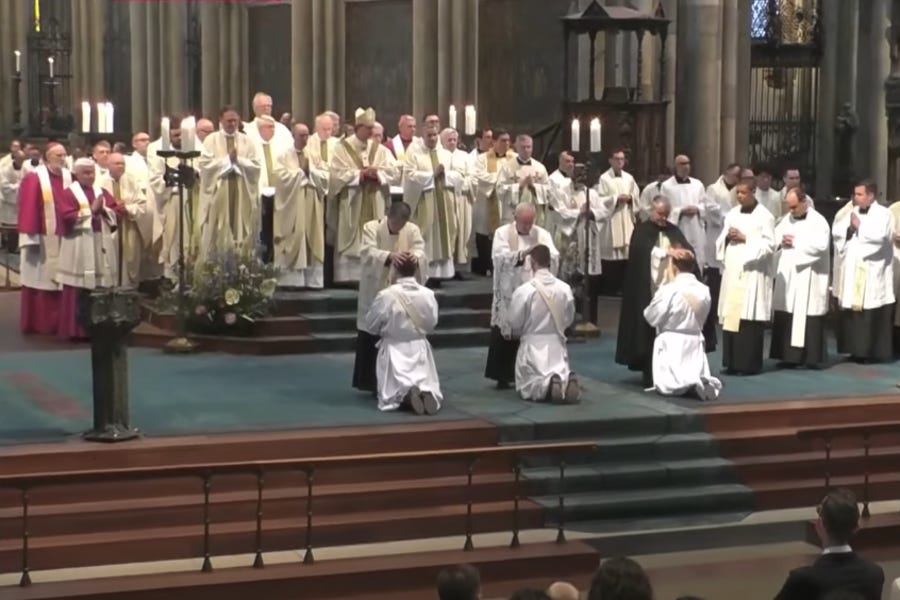Pope Francis on Tuesday made a series of changes to the Church’s universal canon law, which he said were aimed at fostering a healthy decentralization in the life of the Church. The changes are kind of a grab bag, touching on several areas of Church governance.
Want to know ‘em all? The Pillar brings you the best guide to the Feb. 15 changes you’ll find anywhere, guaranteed.
Canon 237 § 2
The change: Until Tuesday, the Church required that bishops, or even bishops’ conferences, who wanted to establish an interdiocesan seminary first get the approval of the Apostolic See. Establishing one now requires not “approval,” but “confirmation.”
What this means: An interdiocesan seminary is one whose governance and administration is shared by several dioceses. It used to be that the Vatican had to “approve” setting one up. Now the Vatican only has to “confirm” the plan.
As a practical matter, not much has changed here. Bishops who want to set up an interdiocesan seminary still must write to the Vatican and get an ok. The language is a bit different. Where once they would have written to say “We would like to do this, do you approve?” now they will write and say “We are planning to do this, do you confirm that plan?”
Seem like semantics? It’s a bit more than that.
On liturgical matters, the Vatican gives “confirmation,” according to the Congregation for Divine Worship, when Rome is satisfied with “the legitimacy of the approval procedure followed by the episcopal conferences” — in short, when a decision was made through a legitimate decision-making process.
Confirmation spends less time on the substance of the decision than approval, because it is “ordinarily granted based on trust and confidence.”
Of course, that definition is related to confirming liturgical translations, not administrative decisions. But it does convey the general Vatican sense of confirmation — that while “approval’ digs into the substance of a decision, “confirmation” is usually less engaged with the minutiae of the substance, and more engaged with the process that led to a decision.
From the pope’s viewpoint, this kind of change recognizes a central theme of Vatican II, namely that bishops aren’t just branch managers of the Vatican — They’re overseen by the pope, but that they have certain real authority in their own right. On the other hand, the Holy See will still be involved in the process, and while confirmation requires a lower threshold of oversight, the Vatican can still push back on a plan if it doesn’t think it’s a good idea.
Canon 242 § 1
The change: Each national bishops’ conference in the Church is required to establish a “program of priestly formation” — a set of norms and guidelines which make concrete the Vatican’s requirements on the formation of seminarians. Those programs of priestly formation required, until Tuesday, the “approval” of the Vatican. Now they require “confirmation.”
What this means: Like the interdiocesan seminary decision, the change here is mostly meant to convey the authority of local bishops, even when acting together as a conference, and to emphasize an ecclesiology that respects the authority of diocesan bishops. Practically speaking, it’s not clear this will mean much of a difference. The U.S. bishops are, right now, in a lengthy discussion with the Congregation for Clergy about revising the U.S. “Program of Priestly Formation.” It seems unlikely this change will alter that conversation very much.
Canon 775 § 2
The change: Bishops’ conferences can publish catechisms for their territory with the confirmation, rather than approval, of the Vatican.
What this means: In addition to the Church’s universal catechism, bishops’ conferences are permitted to publish comprehensive texts to teach the faith in a way that takes into account the culture, formation, experience, etc of their people. The USCCB has published such a text.
While developing and publishing national catechisms required approval of the Vatican, it now requires only confirmation — for the theological reasons stated above.
Incidentally, the process of obtaining “confirmation” from the Vatican is sometimes thought to be shorter than the process of obtaining “approval” — but there is not universal agreement on that, with some Church officials saying that the kind of response needed from the Vatican has very little bearing on the length of time it takes to receive one.
Canon 265
The change: Clerical associations, with the faculty from the Holy See, were added to a list of juridic entities which can incardinate clerics.
What this means: Every priest and deacon in the Church must be “incardinated” or attached, to an institutional structure — usually either a diocese or a religious order, or another kind of structure, like a personal prelature.
Canon law lists the kinds of institutions which can incardinate clerics, but the1983 Code omitted a kind of entity that has become more prominent since its promulgation: a clerical association, or group of priests and deacons which is not a religious order, but which has been given special permission by the Holy See to incardinate. The pope’s change simply added the group to the list.
One such group is the Emmanuel Community, an apostolic group which focuses on evangelization around the world.
Canon 604
The change: Associations of consecrated virgins may be established and approved either by diocesan bishops, at the local level, or episcopal conferences, at the national level.
What this means: Consecrated virgins are Catholic women who “expressing the holy resolution of following Christ more closely, are consecrated to God by the diocesan bishop according to the approved liturgical rite, are mystically betrothed to Christ, the Son of God, and are dedicated to the service of the Church.”
Not religious sisters who belong to a religious community, consecrated virgins commit themselves to lifelong celibate service to the Kingdom of God, and that commitment is formalized in a rite of consecration conducted by a bishop.
Consecrated virgins are not de facto members of any group, but do have the right to form groups for mutual support. A new norm, added by the pope, clarifies that diocesan bishops or episcopal conferences can formally approve these groups — there had been some thought previously that only the Vatican’s Congregation for Institutes of Consecrated Life could approve them.
Canon 686 §1
And canon 489 §2 in the Code of Canons for the Eastern Churches.
The change: The supreme moderator of a religious institute can now grant exclaustration to a perpetually professed religious for five years instead of three.
What this means: Exclaustration is an officially recognized period of time in which a member of a religious order is permitted to live outside of the community, and, generally speaking, to be excused from the particular obligations of the community — a daily schedule, for example, or particular prayer requirements.
Exclaustration can be granted for a “grave reason”: sometimes because a religious is discerning leaving the community, because of some long-term personal struggle causing the religious difficulty in community life, or because of some need outside the religious community — a family member in crisis and needing a few years care.
The superior of a religious institute could previously grant a period of exclaustration up to three years. The new norm allows a superior to do so for up to five.
Canon 688 § 2
And canons 496 §§1-2 and 546 §2 in the Code of Canons for the Eastern Churches.
The change: The supreme moderator of an institute of diocesan right can grant a temporarily professed religious an indult of departure without the confirmation of the bishop.
What this means: Some religious orders are institutes of “pontifical right,” which means their internal community life is overseen directly by the Vatican, while others - usually newer or smaller communities - are institutes of “diocesan right,” which means their internal life is governed by a diocesan bishop.
Until Tuesday, the law had permitted only the superiors of “pontifical right” institutes to permit temporary members of the community, those who had not yet professed lifelong religious vows, to leave the order before their temporary vows expired. The superiors of “diocesan right” institutes needed the diocesan bishop to confirm that decision.
The change gives the same authority on this front to “diocesan right” superiors as is enjoyed by “pontifical right” superiors: to allow temporary members of the order to leave before their vows expire, without confirmation from an outside authority. In both cases, the superior does need the consent of the “council,” an elected group of senior advisors in the institute.
Canon 699 §2
The change: The superior of an autonomous monastery can now dismiss a member for grave legal reasons, rather than the diocesan bishop.
What this means: Some monasteries of monks or nuns are called “autonomous monasteries,” which means they are internally governed, rather than part of a religious order with a major superior in authority over numerous monasteries. In such “autonomous” monasteries, a permanent member could only be dismissed from the community, which can only happen for very grave canonical reasons, by the local diocesan bishop.
The change Tuesday vests that authority in the monastery’s superior, usually an abbot or abbess, with the consent of the council, as above.
The move is effectively a recognition of the authority of religious superiors over their own communities.
Canon 700
The change: A religious major superior can now dismiss a member without confirmation from the Apostolic See or diocesan bishop.
What this means: Until Tuesday, whenever a permanent member of a religious order was to dismissed from the community, which can only happen for very grave canonical reasons, the community’s decision had to be confirmed by an outside authority — either by the Vatican’s Congregation for Institutes of Consecrated Life (for “pontifical right” institutes), or by the local diocesan bishop (for “diocesan right” institutes).
The dismissal of a member no longer requires the confirmation of those outside authorities. The move is generally understood as a recognition of the authority of religious superiors over their own communities. While dismissal decrees must explain how the decision can be appealed, some canonists have expressed concern that without the requirement of confirmation, the rights of religious will be less protected.
Canon 1308
The change: The diocesan bishop is given the faculty to reduce Mass obligations, rather than the Apostolic See, the remainder of the canon is correspondingly simplified.
What this means: Imagine a pastor comes to a new parish and finds that the parish records are completely disorganized. He might find that the parish has accepted the obligation to offer hundreds of Masses for various intentions, and has not kept track of what the intentions are, who the donors are, what amount was offered, etc.
Until Tuesday, only the Vatican could reduce the parish’s number of Mass obligations, and fix the situation at that disorganized parish. The new law, in deference to the authority of the diocesan bishop, permits him to reduce the Mass obligation, so that the pastor could, for example, offer one Mass, or even a dozen Masses, for all the intentions accepted previously in the parish.
Canon 1310
And canon 1054 in the Code of Canons for the Eastern Churches.
The change: The diocesan bishop, or another relevant ordinary, can reduce or change “pious wills” after consulting the interested parties and the finance council, even if the founder did not give him express permission to do so.
What this means: “Pious wills” are a broad category of donations made to the Church for pious purposes: Masses offered, apostolic or charitable work, etc. Pious wills can be given before death, but once they are accepted, the terms, or commitment of the receiver, can not usually be changed by the diocesan bishop, religious superior, or other local authority, unless the donor gave direct permission for the obligation to be changed.
When circumstances change, that rule can cause a challenge — if money is given for the upkeep of a particular chapel, for example, and the chapel is so well-funded that the money is just sitting there not being spent, while other nearby churches are falling into disrepair. Until Tuesday, a local authority would need to go to the Vatican to see the obligation changed, while the new law allows a diocesan bishop, for example, to consult with survivors of the deceased, and with the diocesan finance council, and then modify the expenditure of the money.
This law may prove controversial, as the bishop’s ability to modify the intended destination of funds could lead to concern that donated money will support projects outside of the interest of the donor.





